SAF forces showcase air-land integration at Exercise Wallaby 2025
Sign up now: Get ST's newsletters delivered to your inbox
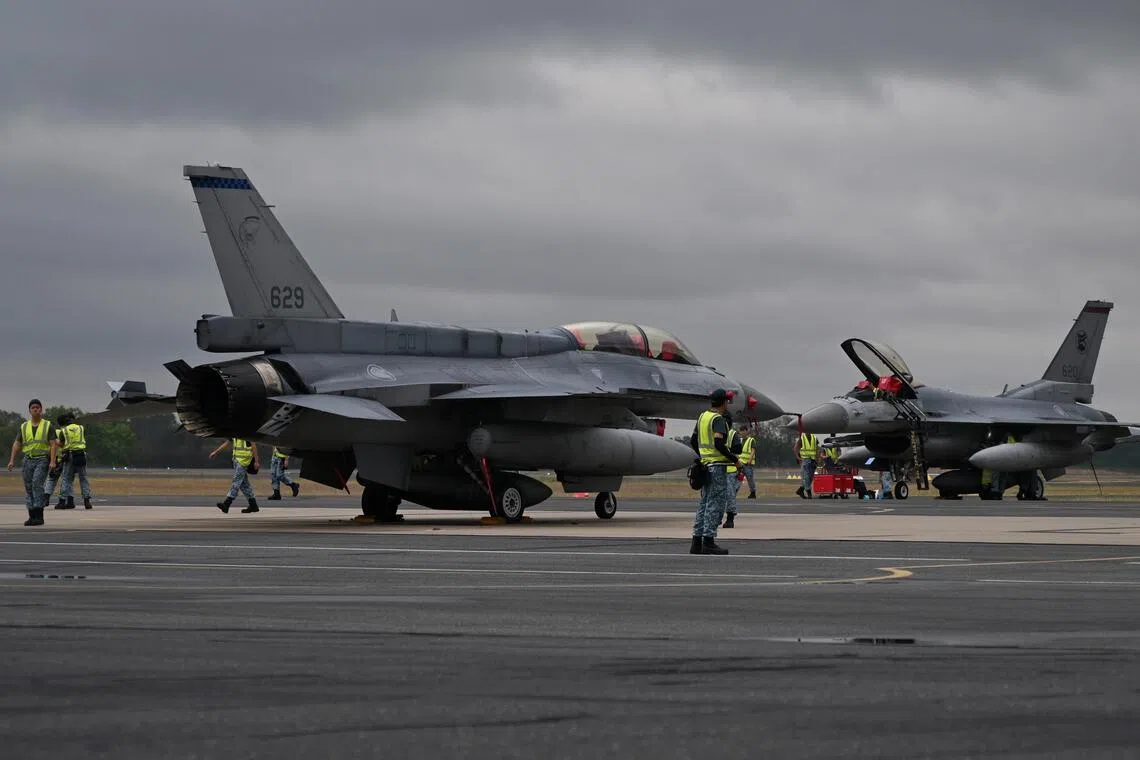
Aircraft technicians with the F-16 Fighting Falcons during the Exercise Wallaby at Shoalwater Bay Training Area in Queensland, Australia.
ST PHOTO: KUA CHEE SIONG
Follow topic:
- Singapore Army and RSAF jointly executed a complex strike mission at Exercise Wallaby, with an F-16 successfully hitting a moving target using intel from surveillance drones.
- The exercise involved integrated firing of F-16s, AH-64 attack helicopters, and the inaugural live-firing of the army’s Himars mounted rocket launchers.
- Over 400 personnel from the army, RSAF, and DIS participated, testing airspace coordination and rapid 3D-mapping technology of battlefield environments.
AI generated
SINGAPORE – An enemy tank was on the move, having been spotted by the Singapore Army’s eyes in the sky – a suite of drones that had been persistently monitoring the battlefield.
For Major Marcus Lee, callsign Relic, the mission for his F-16 fighter jet was to use the intel gathered to locate and strike the target with a GBU-49 – a 500-pound, GPS- and laser-guided bomb.
The ensuing successful hit – and on his first attempt dropping a guided weapon – was a good confidence builder, said MAJ Lee. It also served to validate the army’s and Republic of Singapore Air Force’s (RSAF) ability to jointly execute a complex mission.
This strike mission was one aspect of the integrated live-firing exercise that has been taking place at Exercise Wallaby, the Republic’s largest overseas military drill held annually at Shoalwater Bay in Queensland, Australia.
The exercise began in September and is scheduled to end in early November. It is now in its third phase or “frame”, which runs from Oct 16 to Nov 2.
Other manoeuvres included the integrated firing of the RSAF’s F-16s and AH-64 attack helicopters, alongside the inaugural live-firing of the army’s High Mobility Artillery Rocket System (Himars) rocket launchers at Shoalwater Bay.
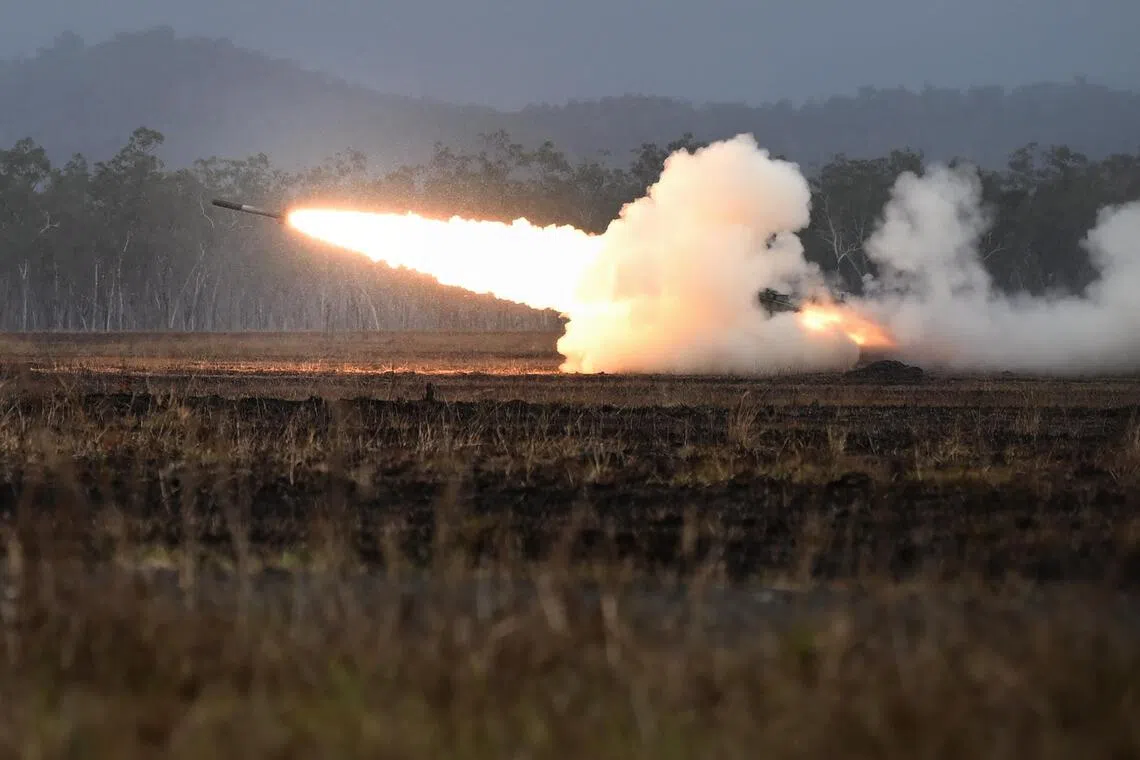
This year marks the 35th edition of Exercise Wallaby.
ST PHOTO: KUA CHEE SIONG
The exercise involved more than 400 personnel from the army, air force and the Digital and Intelligence Service (DIS), alongside over 100 engineers from the Defence Science and Technology Agency, DSO National Laboratories and SAF’s defence industry partners.
The commander of 6th Singapore Division/Headquarters Sense and Strike (6 Div/HQ SS), Colonel Kwek Kian Leong, said the aim of 2025’s exercise is to better understand the battle situation, detect the enemy and act decisively.
To do so required a “multi-tiered deployment of unmanned aerial vehicles (UAVs)” to enable the SAF to have a persistent and pervasive picture of the battlefield. This included the Orbiter 4 close-range UAV, the V15 mini-UAV, and a suite of micro-class UAVs highly suited to the urban terrain, said COL Kwek.
The information gathered was then fed back to the command post and put through computer vision, data analytics and artificial intelligence to help mission planners make sense of the ground reality and to propose the most appropriate course of action, he added.
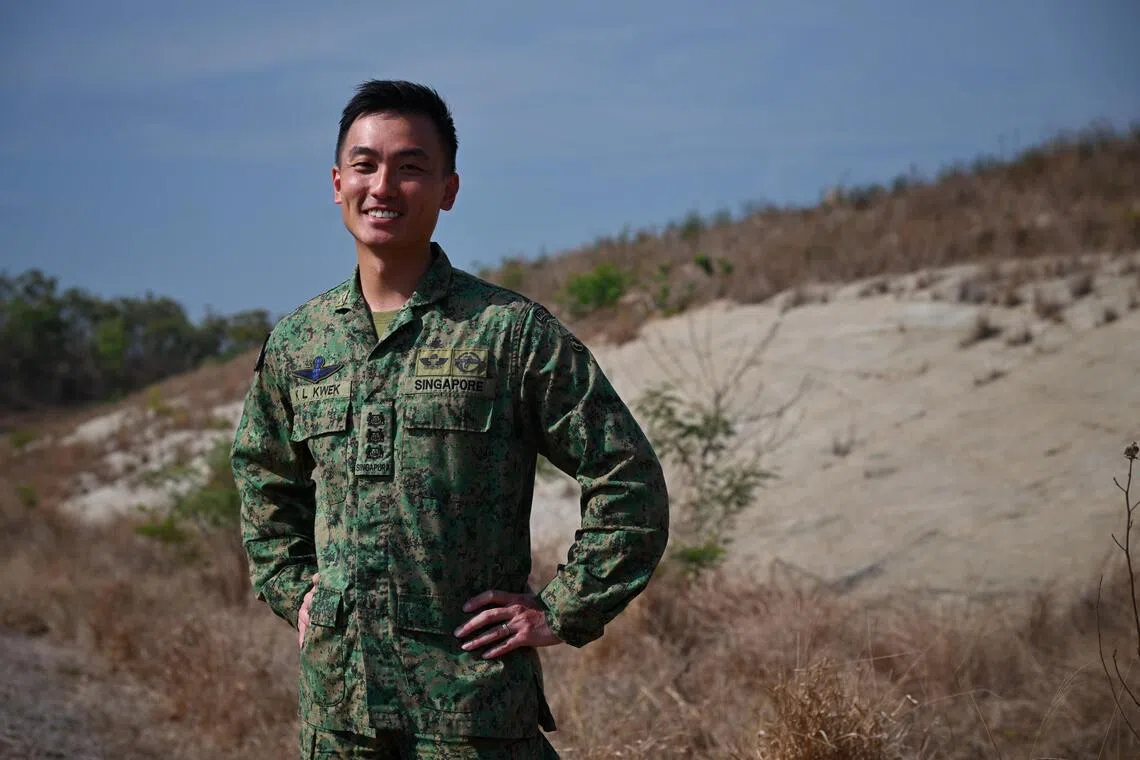
Colonel Kwek Kian Leong said the aim of 2025’s exercise is to better understand the battle situation, detect the enemy and act decisively.
ST PHOTO: KUA CHEE SIONG
Given the number of aircraft and drones operating in the same area, COL Kwek said, one of the most significant challenges at 2025’s exercise was airspace coordination and management.
The SAF dealt with this by starting out with component training, and progressively upping the complexity with the addition of new assets. It also conducted about 10 combined exercise planning meetings.
To ensure safety and prevent midair collisions, aircraft were also separated into blocks of airspace at different heights, and there were clear processes for transit lanes, said Lieutenant-Colonel Dai Jing, the ops officer of 6 Div/HQ SS.
“We made sure everybody knew (his or her) role very well and was well-coordinated, such that when we brought everything together and executed it together, it was safe, but also operationally to standard,” she added.
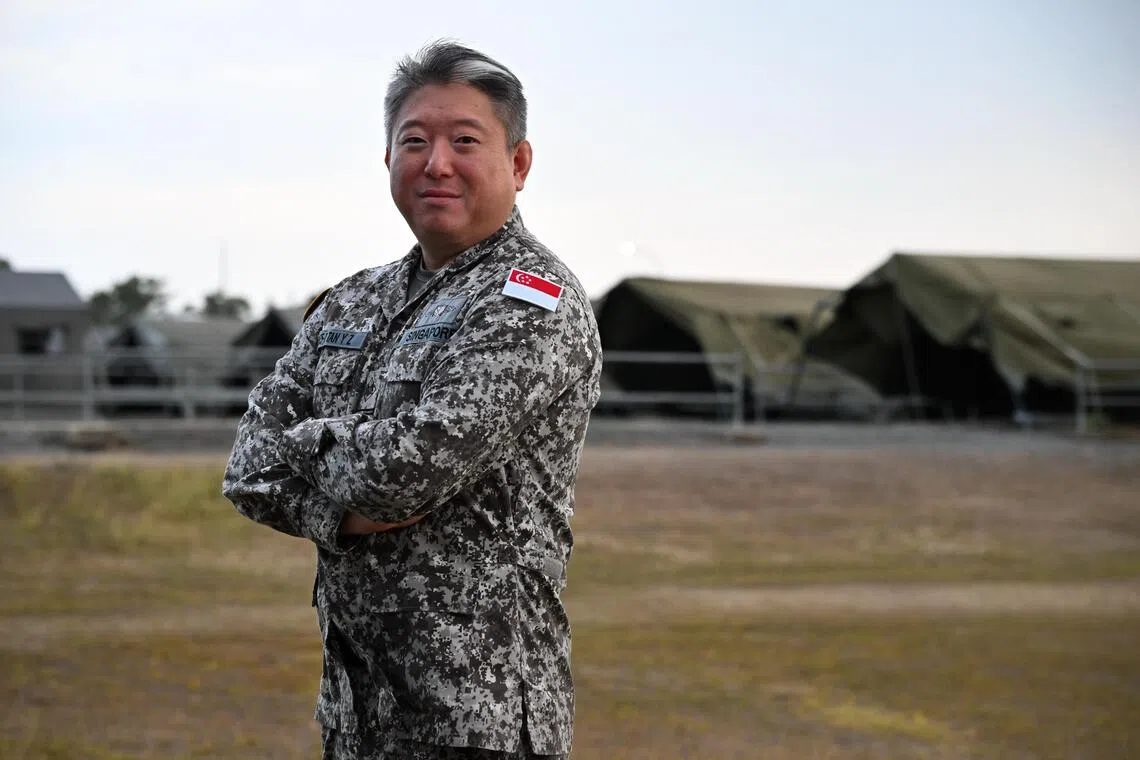
Military Expert 5 Ian Tan said the DIS realised from its inaugural participation in Exercise Wallaby in 2024 that army and RSAF planners need a visual representation of the operating environment.
ST PHOTO: KUA CHEE SIONG
The SAF also trialled the use of rapid 3D-mapping technology to help its tactical troops achieve near real-time visualisation of the urban environment they were operating in.
Military Expert 5 Ian Tan, who is leading the exercise’s imagery support group, said the DIS realised from its inaugural participation in Exercise Wallaby in 2024 that army and air force planners needed a visual representation of the operating environment, which was why in 2025 it created a 3D replica of the Shoalwater Bay training area.
Major Chin Wei Jian, the supervising officer of the Himars live-firing exercise, said the integration of the three services meant that necessary target information could be relayed to Himars operators to ensure its rockets could be delivered “on time, on target, any time and every time”.
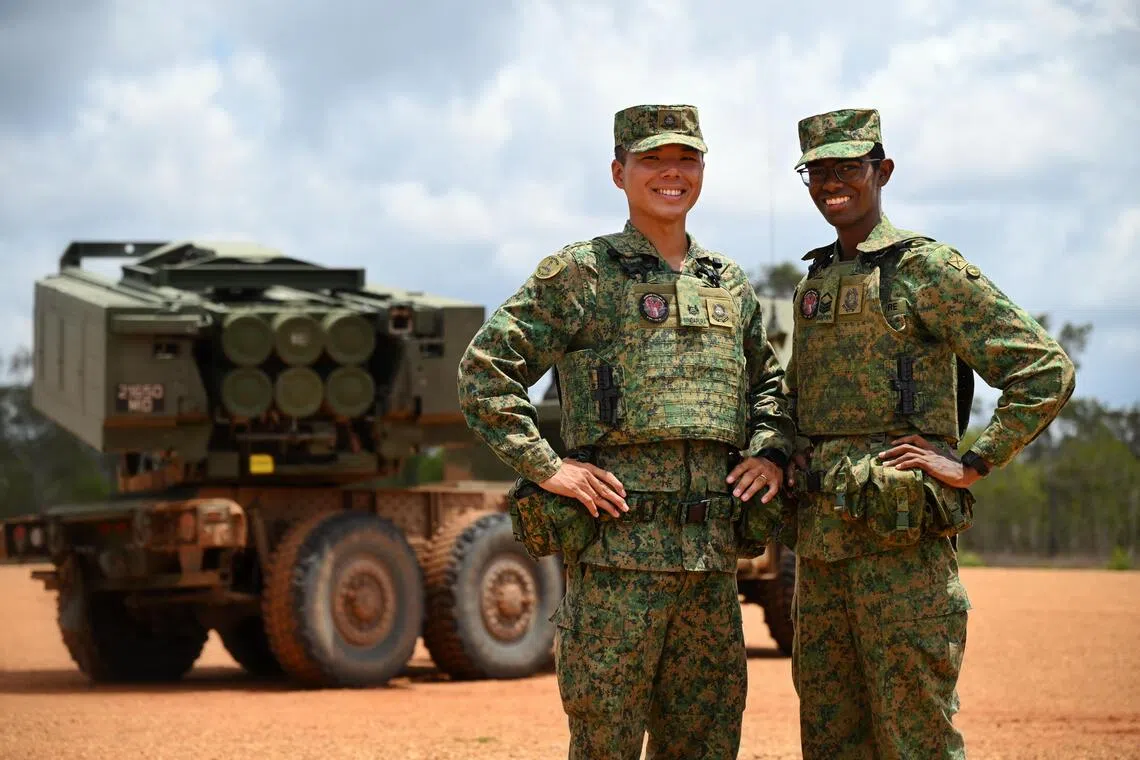
Maj Chin Wei Jian (left), the commanding officer of the 23rd Battalion Singapore Artillery, and Second Sergeant Surenthiraraj Sailaindraa, the Himars launcher battery sergeant major.
ST PHOTO: KUA CHEE SIONG
This opportunity to conduct realistic manoeuvres alongside the other services was very valuable, given that it is not something that can be done in Singapore, added MAJ Chin, who is commanding officer of the 23rd Battalion Singapore Artillery.
MAJ Lee, the F-16 pilot, concurred, noting that Shoalwater Bay had urban operations training facilities, jungle terrain, and mountainous areas, which allowed the air force and army to work towards shared objectives.
“The challenge is mainly that we don’t have a lot of experience with the army, so there were a lot of communications issues at the start, but then we worked through them and sorted out our differences during the exercise,” he said.
He added: “It was a good opportunity for us because it’s one of the rare exercises that we get to interact with the army controllers.
“So we get to learn their lingo, run through the processes with them and improve on those so we get familiar with how to support them in their missions.”


